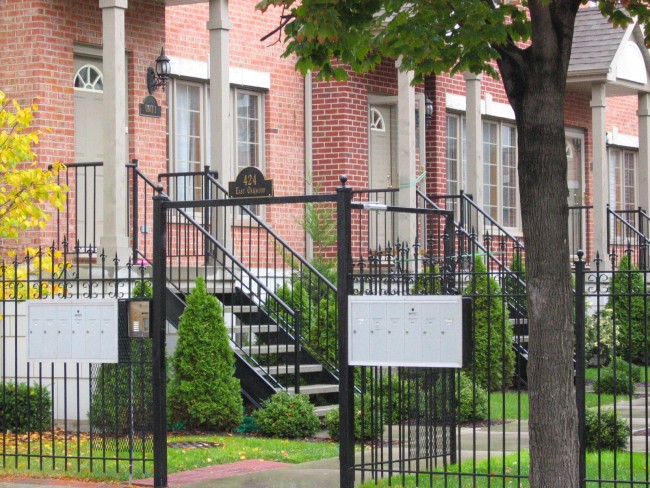Note: This is the first in a series of blog posts from Susan Popkin on her long history working with the Chicago Housing Authority (CHA) and the results of a ten-year study on the experiences of CHA families as they were relocated and their buildings were demolished and replaced with new, mixed-income housing.

Photo by Megan Gallagher, Urban Institute
The first time I visited a Chicago Housing Authority (CHA) development was in the mid-1980s, when I was a young graduate student interviewing welfare recipients for my dissertation. My friend—shorter and smaller than me, but along for the ride to “keep me safe”—and I pulled up to the Robert Taylor Homes on a windy spring evening.
There was no grass, so dirt was whirling around and making children’s eyes tear as they waited with us for the elevator—we didn’t yet know that it was better not to ride them.
When we got upstairs, the woman we were meeting asked us why on earth we’d come up—hadn’t we seen the police and the ambulance, the evidence of another shooting? We had to admit we were too naïve to know what they meant. She turned out to be a fascinating interview subject—one that sticks with me after more than 25 years. She was a community activist and a mentor of teen mothers.
While we talked, the wind kept blowing her door open; it felt like a metaphor for the way the chaos of Robert Taylor kept intruding into her clean and orderly home. Since that time, I’ve enjoyed a long history of working with the CHA to understand the effects of housing policy on the city’s residents. I’ll detail that history in a future blog post, but today I want to focus on some of the findings we’re releasing today after more than 10 years of research.
A “Plan for Transformation”
In October, 1999, the CHA formally launched its Plan for Transformation, which called for demolishing the agency’s worst public housing properties and replacing them with mixed-income housing developments. The Plan also called for revitalizing thousands of units in senior buildings and less distressed developments.
In 2001, we began tracking 200 CHA families as part of the HOPE VI Panel Study. Our first rounds of follow-up surveys in 2003 and 2005 showed real benefits for families who used vouchers to move to the private market and for the handful who moved to mixed-income housing. But these surveys raised real concerns about the substantial proportion of families stuck in the CHA’s remaining developments—places that were growing more dangerous as the Plan progressed and vacancies increased.
Because of these concerns, the CHA began collaborating with the Urban Institute in 2005 to develop a case management demonstration to address the needs of the most vulnerable families. After two years, the Demonstration showed positive results, with participants reporting higher rates of employment and better mental health—and faring better than those in the Panel Study, who did not receive intensive services.
Our Worst Fears, Unfounded
The study we’re releasing today reports on a 10-year follow up of the Panel Study families and a 4-year follow up of the Demonstration participants. Our results show that our worst fears – that that relocation would just be one more blow for residents who had endured the worst days of CHA– were unfounded. Instead, residents like the woman I interviewed in Robert Taylor nearly three decades ago are now far better off than they were.
Some of our findings:
- The majority of residents now live in decent housing in neighborhoods where they feel substantially safer.
- Those who live in the CHA’s remaining rehabilitated developments report better conditions than those who are renting private-market units with vouchers—a finding that speaks to the CHA’s investment and to the variability of its now very large (more than 36,000-unit) voucher program.
- Most exciting is that Demonstration participants’ mental and physical health has improved significantly and their employment gains have held.
But along with this good news is reason for concern:
- Though their parents are doing better, children and youth continue to struggle.
- Voucher holders report trouble managing utility costs.
- While the new communities are better than the old CHA developments, they’re still racially segregated and poor.
While these findings may seem abstract, behind each are the lives of people and stories of struggle and triumph. In my next post, I’ll share some of the stories that keep me doing this research.
Let’s build a future where everyone, everywhere has the opportunity and power to thrive
Urban is more determined than ever to partner with changemakers to unlock opportunities that give people across the country a fair shot at reaching their fullest potential. Invest in Urban to power this type of work.